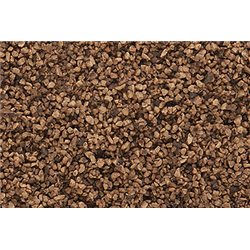Mainline Railways was a British model railway brand that operated between 1976 and 1983, introduced by Palitoy, the...
No products
Product successfully added to your shopping cart
There are 0 items in your cart. There is 1 item in your cart.
Search Tips
Easter shipping
Please note that couriers are not collecting on Friday 18th and Monday 21st April.
Orders will be dispatched on Tuesday 22nd April
What coarseness ballast should I use for my OO scale railway?
Ballast comes in varying degrees in coarseness, fine medium and coarse.
For OO scale the most realistic would have to be medium. OO gauge is 1/76 scale so measure a few ballast stones and multiply the size by 76 to check whether it would be correct in real life.
Although there is nothing to say that you cannot use any of the others on your layout.
You could use coarse ballast in your quarry scene to represent ballast to be broken down and fine ballast on the quarry floor to represent fragments.
Use all three types of ballast to create wagon loads.
Click here to receive the tips weekly in your mailbox. You can unsubscribe at any time.










